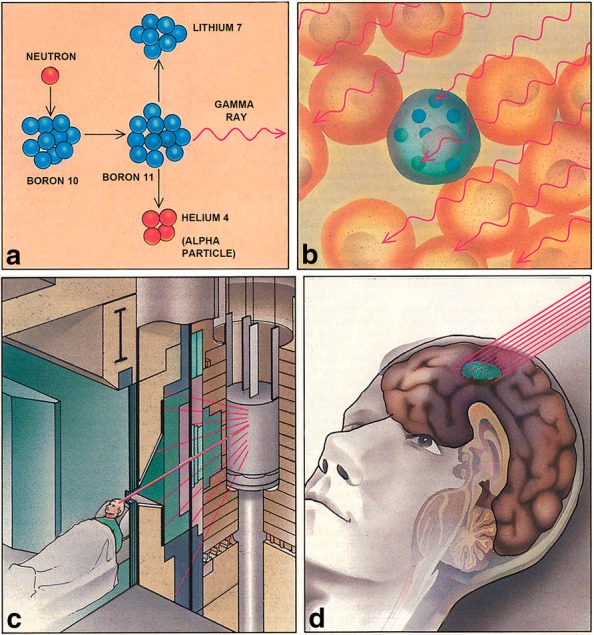Fig. 1.

BNCT is based on the nuclear capture and fission reactions that occur when boron-10, a nonradioactive constituent of natural elemental boron, is irradiated with low-energy (0.025 eV) thermal neutrons or, alternatively, higher-energy (10,000 eV) epithermal neutrons, which lose energy as they penetrate tissues and become thermalized. This capture reaction results in the production of high linear energy transfer (LET) alpha particles (4He) and recoiling lithium-7 (7Li) nuclei (Fig. 1a). In order to be successful, a sufficient amount of 10B must be selectively delivered to the tumor (~ 20–50 µg/g or ~ 109 atoms/cell) (Fig. 1b) and a collimated beam of neutrons (Fig. 1c) must be absorbed by the tumor (Fig. 1d) to sustain lethal damage from the 10B(n,α)7Li capture reaction. The destructive effects of the alpha particles are limited to boron-containing cells and, because they have very short pathlengths in tissues (5–9 µm), BNCT provides a way to selectively destroy malignant cells and spare surrounding normal tissue, making it, in theory, an ideal type of radiation therapy
